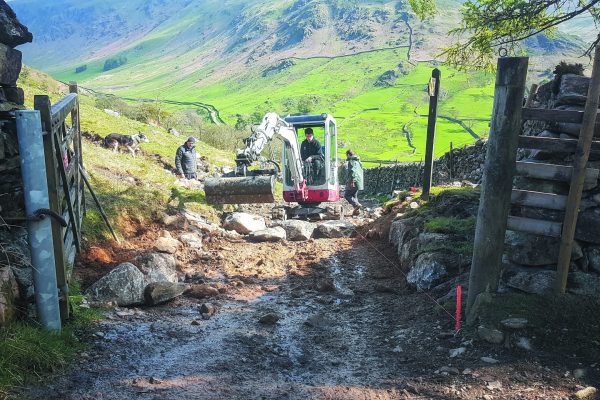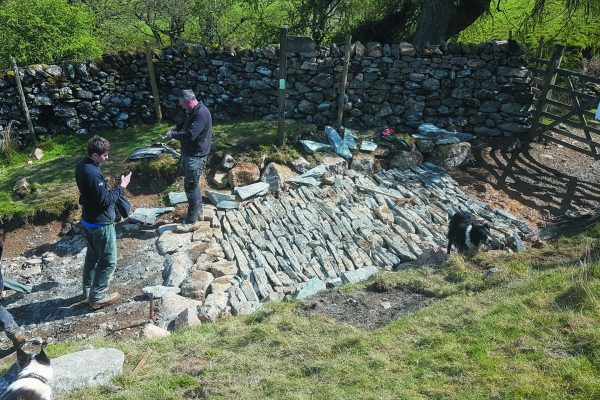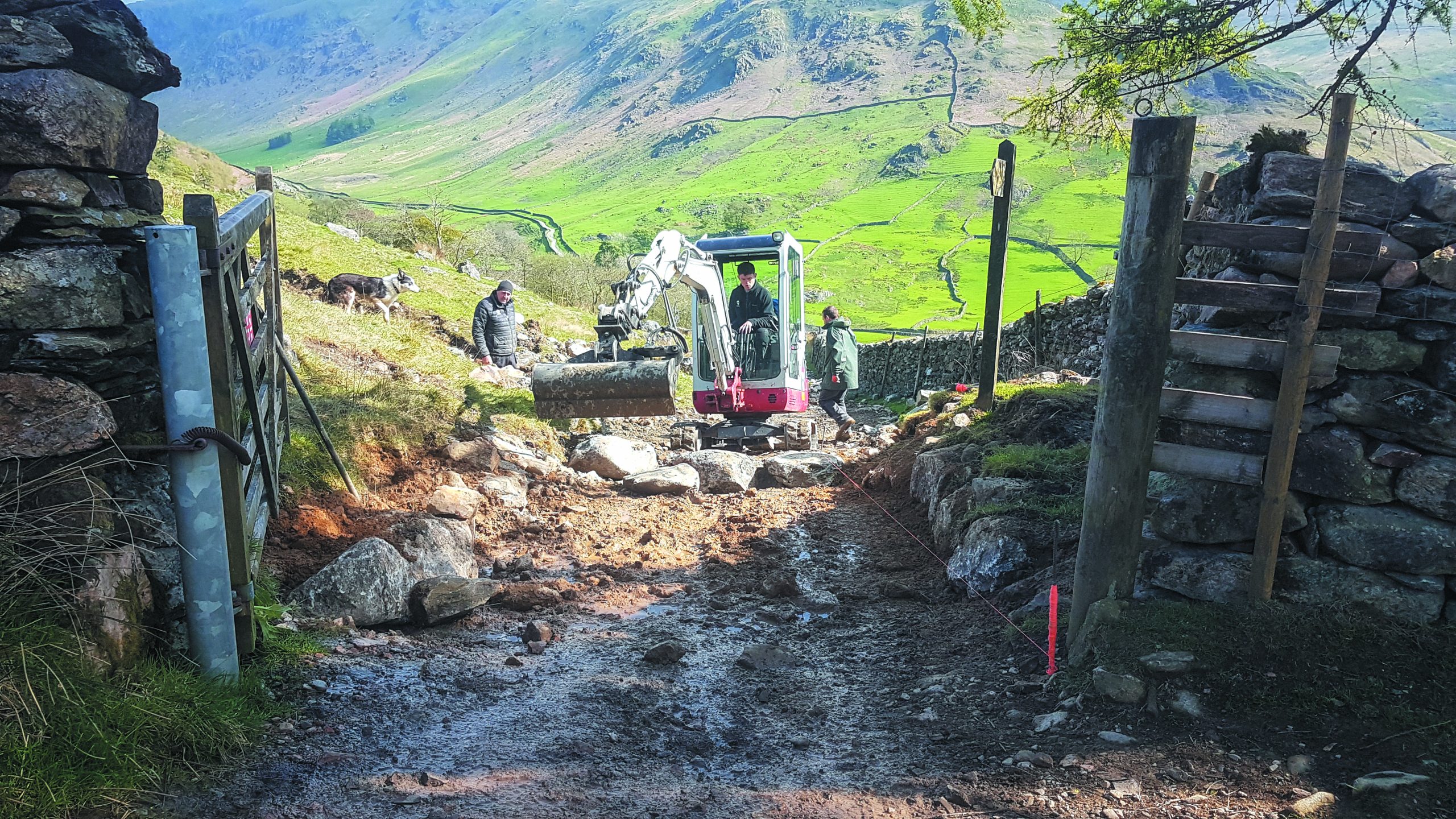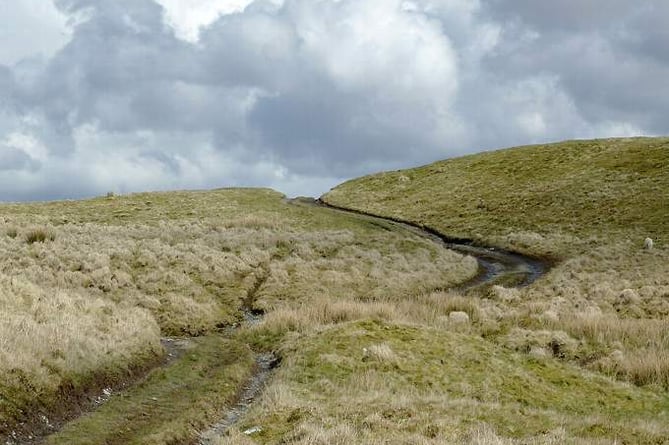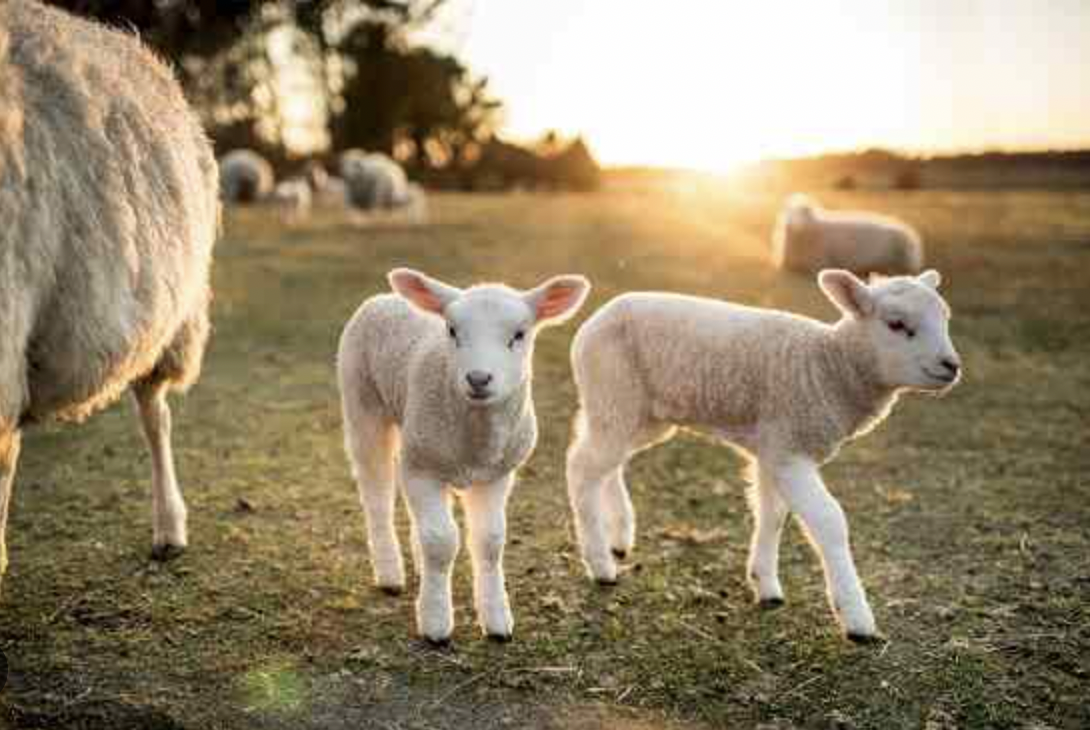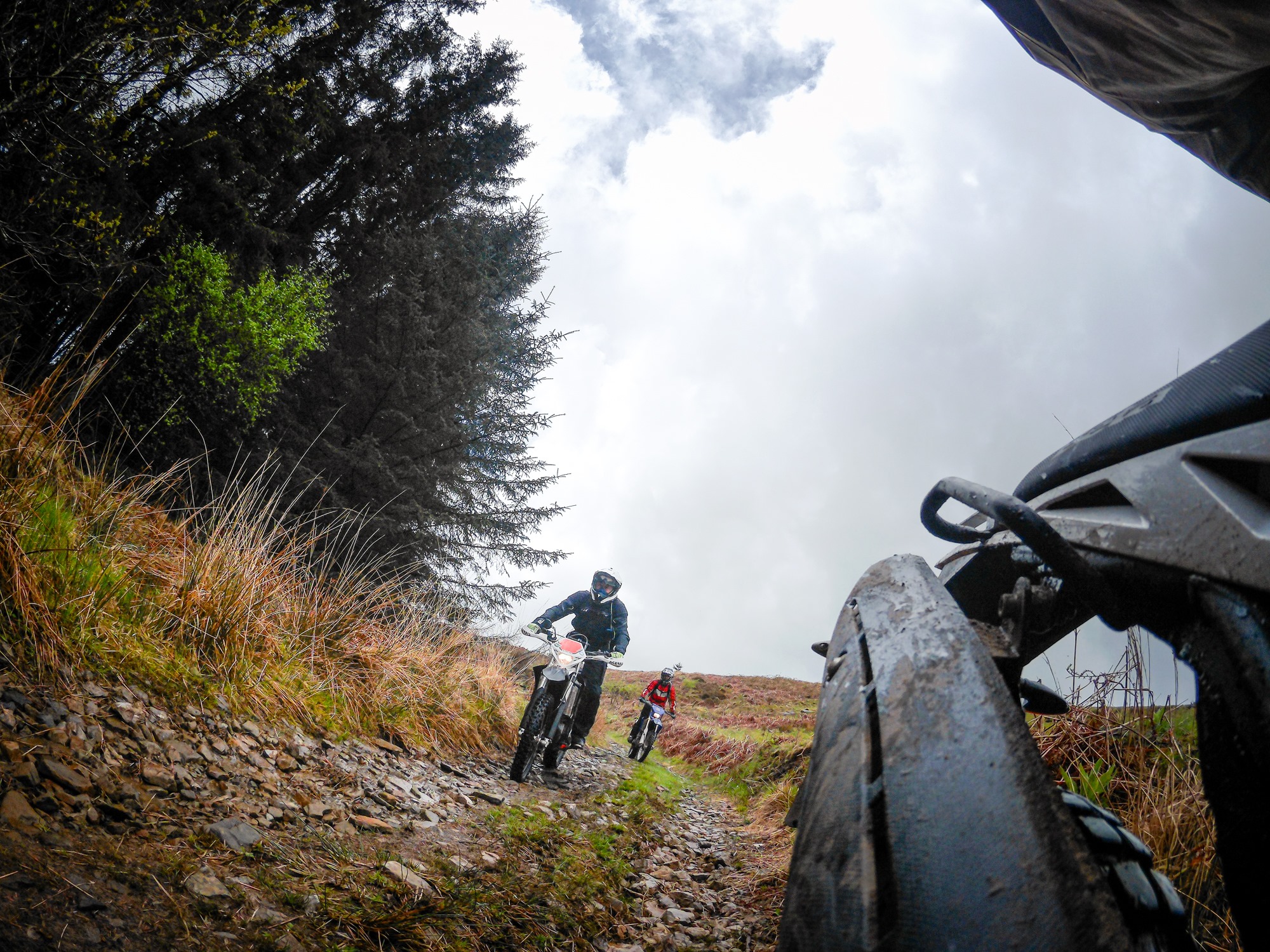Being part of the solution
We take a look at how the TRF works with authorities and local communities to conserve public access. Conservation, it’s a people thing. Most things in life are a people thing, but conservation in the context of the TRF and green roads, well, its very people- orientated, working with different groups outside as well as within our own organisation. So, when it comes to getting started in conservation, who do we talk to, and where and when? It can be a bit overwhelming, but there again, everyone has to, or did, start somewhere.
First steps
Frankly getting started isn’t difficult. Go to your local group meeting tell the Chair you’d like to offer your services for conservation work and they’ll bite your hand off! If your group is very active in green road maintenance, such as seems to be the case in the national parks, chances are you’ll be put to work on a working party fairly promptly.
Outside of national parks, physical works are more problematic and less numerous and the likelihood here is you’ll become part of a system of community liaison organised by the local authorities. Mark Bullen remembers how he started in conservation with the Loddon Vale TRF:
“There were a couple of guys in the group who helped me to understand what the different public rights of way are, they briefed me on some of the battles that occurred in the past, such as the NERC Act, and to understand what the threats are to trail riding. Just as importantly, they explained what are the good bits that we (the TRF) give back. There was quite a lot of hand holding in the early stages as they passed over the attendance at the local authorities’ Local Access Forums (LAFs) to me, and subsequently at the monthly TRF meeting we would discuss the things that had come up at the LAFs, so I was well prepped and picked it up fairly quickly.”
These Local Access Forums are the scheduled, typically monthly, public interface sessions between the local authorities’ Rights of Way team and the wider public, and it’s here many of the matters relating to rights of way are discussed before action is taken. LAFs are open to all members of the public, but individuals need to apply – giving background and reasons – and be given permission before attending. As you’d imagine, the attendees generally come from interested organisations, so there’ll be those with interests in walking, cycling, horse riding, local landowners and such. Being individuals, still, their attitudes will vary.
Mark Bullen: “You’ll typically find representatives of, say, the Ramblers and cyclists groups and understandably they’ll be pushing or defending their position, which is often in opposition to our standpoint. Of all the attendees I find the horse riders align mostly with us, we appreciate each other’s position because I think they have a lot of similar problems to us such as access, as they’re only allowed on restricted byways and byways.”
“Despite coming from different backgrounds and with different needs and agendas, the LAFs are an opportunity to work together, to find common ground. Our interests extend beyond just riding motorcycles and it helps when people see this, and see we care for the countryside, too. And to take interest in the needs of others is part of this; for instance the Ramblers are just as proactive in path maintenance as we are with green roads, so I respect them for that.”
Patrick Wallace from Sussex TRF has found presence on LAFs has gone a long way to seeing fairness applied to byway management, and by being helpful and constructive within the meetings good decisions are made as a result. “I sit on the East Sussex LAF and have influenced and supported the Rights of Way officer there to ensure that motorised users’ rights are safeguarded. Many lanes which are vulnerable to vehicle damage when wet are given restricted access between October and April to all vehicles except two- and four-wheeled motorcycles. After years sitting in on the LAF, the Rights of Way officer no longer needs my guidance on facilitating access by motorised users – he is an expert! So, I now just keep a watching brief at ESLAF meetings on matters which might affect us in the TRF.” A word of warning from Patrick, though, for you never know where these things might lead…
“When I decided I should now join the Lewes-based East Sussex LAF (ESLAF), as there are many BOATs there which were in danger of being restricted as far as motorised users were concerned, I offered my place on the Brighton LAF to John Vannuffel (he and I have quite a long association of trail riding together) and I knew it would give him the grounding in how LAFs operate, should he want to get deeply into preserving motorised rights to access non-metalled rights of way. Look at him now!” (JV is of course now the TRF’s Technical Director.)
We should also note, as intimated by Patrick, that groups need multiple rights of way conservationists as one group might need to liaise with multiple authorities in their area. Loddon Vale TRF, for instance, deals with West Berkshire and Wokingham councils as well as parish councils. And then there may be participation in specialist interest groups such as, for Mark Bullen, the Bucklebury Common Advisory Committee, which is dealing with one particular location. Here, Mark and the Loddon Vale TRF, through the Bucklebury Committee, were able to help the local community.
“As they’ve had rogue motorcyclists riding over the common, they’ve been very supportive of us supporting them, by us going up there on our bikes standing around for half a day and meeting and educating the rogue riders into understanding what is legal and what isn’t legal. And that is part of it, making sure everybody understands what is okay for trail riding, what it is and what it isn’t.”
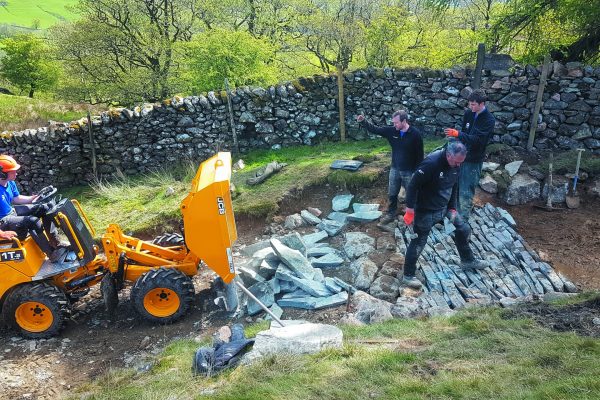
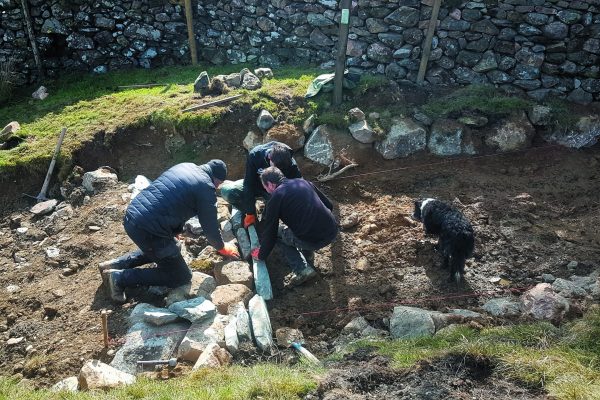
Boots on the ground
Discussions in the LAFs do then lead to action. And this is part of demonstrating our respect and care for the countryside and its community. For Mark Bullen and Loddon Vale this has led to lane clearances – pruning the vegetation – which is a benefit for all users.
“In terms of using the tools it’s clear they (the LA) prefer you not to use power tools unless you have a valid licence. They are okay with hand tools, and you can get quite a lot done with hand tools – we’ve done some lane clearances where we’ve spent only three or four hours and really cut them back and made them good.
“We’ve also been able to problem-solve by offering financial help. For instance, where machinery is needed we’ve found a solution where we as a group paid for digger hire for three or four days while the council provided their qualified operator.” Up in Cumbria TRF, Steve Stout has accumulated years of experience in working with the National Park authority in the Lakes. Again, it’s not just a matter of bowling in and digging up a lane!
“The best way to get involved is to become a volunteer on any repair days and work with the Rights of Way officers of your group. Meeting up with reps from various authorities is not an easy task. First you have to identify them, then get to meet them and finally, get in on projects. It takes time for them to build trust as when they let you loose on their ‘patch’, they, and the authority, carry a burden of legal responsibility for both your welfare and the project outcome/fallout.
“I recently worked with a LDNPA ranger team, learning how to pitch stone on a BOAT in the Lakes. I asked to be involved in this and after four months and some other volunteer work, was invited along for the day. That went really well, and I am now being asked to do some machinery work on other BOATS for the LDNPA. Cumbria TRF is also running surveys identifying drainage features and possible surface re-instatement for the coming years, as we have learnt how to ‘speak the lingo’ to the right people. It takes time and effort though.”
Just plain helping
Finally, not all acts of conservation need to be tied into working with authorities. John Rigby, the new Chair and Keith Little, the Finance Officer at Lancashire TRF were keen to find a project, and start on helping. By chance while riding in North Wales they met a farmer at a gated green road. The farmer was lamenting on some illegal rid- ing that had occurred on his fields adjoining the road. John and Keith were able to explain that they were from the TRF, that our members respect the countryside and seek to educate all riders on the right way to trail ride. While talking, Keith and John noted that the gate was hanging virtually by its last breath – so they enquired, would the farmer like a new gate?
Keith Little: “So we went back to the group, ran a couple of fund-raising raffles, and had the money for a new galvanised steel five-bar gate! We fixed a plaque on the gate explaining that it was a donation from Lancashire TRF, loaded it into a minibus (it was a big gate!) and drove it down to Wales and fitted it up. We now have a great relationship with the farmer and his wife, they have recently installed holiday-let cabins and we’re looking to going down there for a weekend’s trail riding.
“It’s a simple act, straightforward in terms of buying and fixing, although not so easy to find a gate you might replace! You may find the gate, of course, but finding the farmer who owns it is another thing. All the same, it’s great to be proactive and to be giving back, and it gives our group a sense of purpose. We’ve seen great works of conservation by other groups and it’s our group’s ambition to do likewise.”
